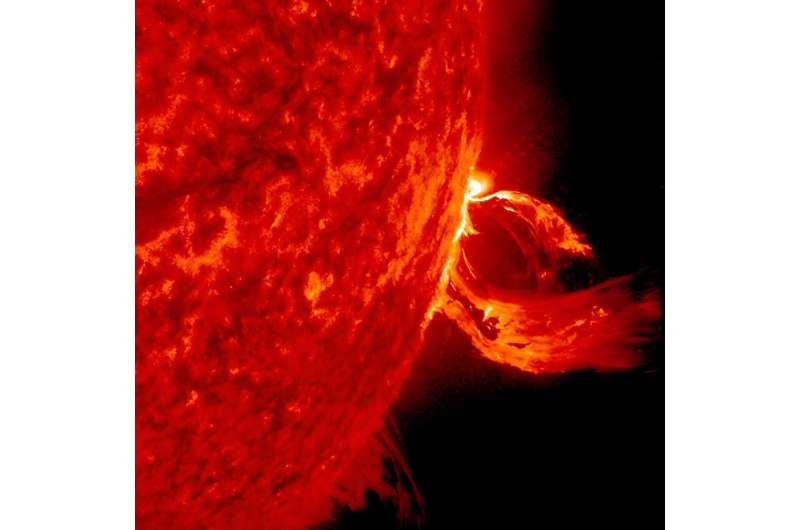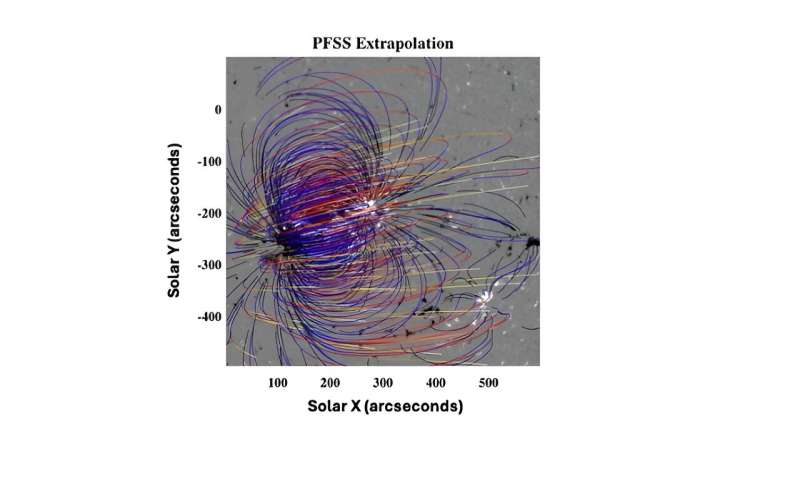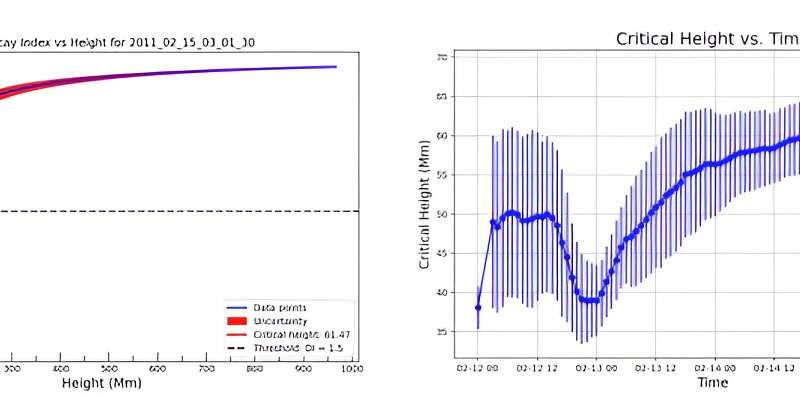This article has been reviewed according to Science X's editorial process and policies. Editors have highlighted the following attributes while ensuring the content's credibility:
fact-checked
trusted source
proofread
New dawn for space storm alerts could help shield Earth's tech

Space storms could soon be forecast with greater accuracy than ever before thanks to a big leap forward in our understanding of exactly when a violent solar eruption may hit Earth.
Scientists say it is now possible to predict the precise speed a coronal mass ejection (CME) is traveling at and when it will smash into our planet—even before it has fully erupted from the sun.
CMEs are bursts of gas and magnetic fields spewed into space from the solar atmosphere.
They can cause geomagnetic storms that have the potential to wreak havoc with terrestrial technology in Earth's orbit and on its surface, which is why experts across the globe are striving to improve space weather forecasts.
Advancements such as this one could make a huge difference in helping to protect infrastructure that is vital to our everyday lives, according to researchers at Aberystwyth University, who will present their findings today at the Royal Astronomical Society's National Astronomy Meeting (NAM 2024) in Hull.
They made their discovery after studying specific areas on the sun called "active regions," which have strong magnetic fields where CMEs are born. The researchers monitored how these areas changed in the periods before, during and after an eruption.
A vital aspect which they looked at was the "critical height" of the active regions, which is the height at which the magnetic field becomes unstable and can lead to a CME.
"By measuring how the strength of the magnetic field decreases with height, we can determine this critical height," said lead researcher Harshita Gandhi, a solar physicist at Aberystwyth University.
"This data can then be used along with a geometric model which is used to track the true speed of CMEs in three dimensions, rather than just two, which is essential for precise predictions."
She added, "Our findings reveal a strong relationship between the critical height at CME onset and the true CME speed.
"This insight allows us to predict the CME's speed and, consequently, its arrival time on Earth, even before the CME has fully erupted."
-

Magnetic field lines at different heights above the photosphere extrapolated using Greens function approach as seen from top to bottom. Credit: Harshita Gandhi, Attribution (CC BY 4.0) -

Left—shows a PIL averaged decay index profile versus height above the photosphere in Mm at the time of CME eruption with critical height as 61.47 Mm. Right—shows critical height over time for AR11158 with red and black dotted lines indicating CME onset and C2 time. Credit: Harshita Gandhi, (CC BY 4.0)
When these CMEs hit the Earth they can trigger a geomagnetic storm which is capable of producing stunning aurorae, often referred to in the northern hemisphere as the Northern Lights.
But the storms also have the potential to disrupt vital systems we rely on daily, including satellites, power grids, and communication networks, which is why scientists worldwide are working hard to improve our ability to better predict when CMEs will hit Earth.
This requires knowing a more accurate speed of the CME shortly after it erupts from the sun to better provide advance warnings of when it will reach our planet.
Accurate speed predictions enable better estimates of when a CME will reach Earth, providing crucial advance warnings.
"Understanding and using the critical height in our forecasts improves our ability to warn about incoming CMEs, helping to protect the technology that our modern lives depend on," Gandhi said.
"Our research not only enhances our understanding of the sun's explosive behavior but also significantly improves our ability to forecast space weather events.
"This means better preparation and protection for the technological systems we rely on every day."
Provided by Royal Astronomical Society





















